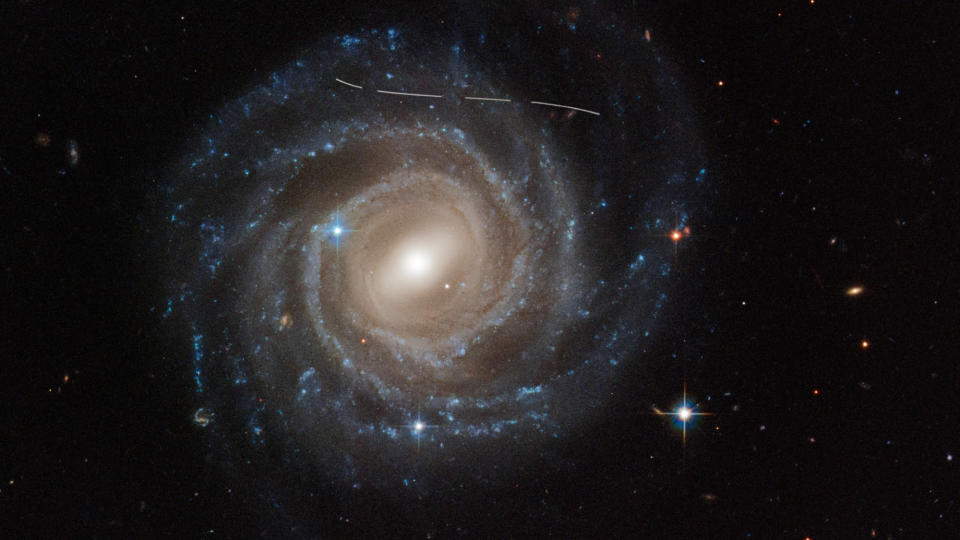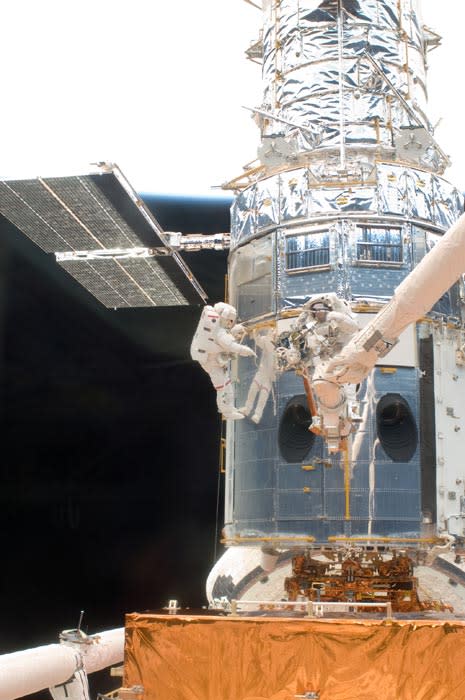Tomorrow (June 4) we’ll get an update on NASA’s Hubble Space Telescope, and it could be a pretty big deal.
On June 3, the agency announced that the Hubble Space Telescope team would hold a press conference about the observatory’s status at 4 pm EDT (2000 GMT) tomorrow. Specifically, officials said the purpose of this meeting would be to “provide an update on operations” for the telescope. Sounds routine, right? Well, not necessarily. The Hubble Telescope team doesn’t hold these types of press conferences very often; especially a meeting where there are only two presenters and both have very high titles.
Mark Clampin, director of the agency’s Astrophysics Division and Science Mission Directorate at NASA Headquarters, and Patrick Crouse, Hubble’s project manager at NASA’s Goddard Space Flight Center in Maryland, will speak.
Relating to: A billionaire hopes to upgrade the Hubble Telescope on a special SpaceX mission, but could that actually happen?
The news comes three days after NASA announced that Hubble had gone into automatic safe mode due to faulty readings from one of the last three working gyroscopes, which help scientists make sure the telescope is pointing in the right direction. Hubble has gone through a number of gyroscopes since its launch in 1990, including some changes. Now there are three left.
Before you get too worried: Yes, this alone may seem like a scary combination of facts. But there is a context in which they can be placed; It’s a hopeful context that Hubble hasn’t completed its missions yet.
First of all, in its statement about the upcoming conference, NASA said something agency officials have repeated many times: “NASA anticipates that Hubble will continue to make discoveries working with the agency’s other observatories, such as the James Webb Space Telescope, throughout this decade and into the next.”
This is a view shared during Hubble’s previous encounters with gyroscope problems, including earlier this year and late last year; The second incident actually involved a brief series of complications that were all resolved. Still, there was no need for a conference to inform the public that Hubble was back in business. Online announcements were sufficient.
This brings us to the next point: Hubble doesn’t actually need all three gyroscopes to work.

As NASA notes, Hubble technically only needs one gyroscope to function properly; but according to the European Space Agency (which partners with NASA on the mission), single gyroscope mode may limit scientific observations to some extent.
Still, there are two gyroscopes that could allow the cosmic explorer to continue investigating the universe, even if the telescope’s now-faulty gyroscope turns out not to return to its old path. For example, in 2004, after the anticipated Hubble shuttle mission was canceled following the space shuttle Columbia tragedy, the observatory was switched to two-gyroscope mode. Finally, Hubble Shuttle Mission 4 replaced all six gyroscopes for the last time in 2009, after which a fifth shuttle mission took place. But still, only three of these gyroscopes remain in Hubble, and one of them is the source of the final count. The other three also experienced what is known as a cabling-related “flex cable failure.”
According to NASA’s data, if only two gyroscopes remain operational in total, the team is likely to keep one on and the other in reserve. This way, if one of the remaining two gyroscopes goes down, the resting one will be nice and fresh and ready for Hubble’s final stretch.
Final overtime? I hope not, but unfortunately it is true that scientists believe the telescope could be decommissioned by the mid-to-late 2030s as our planet’s atmospheric drag gradually brings the craft down from its orbit of about 320 miles (515 kilometers) above Earth.
Such decommissioning would involve either a controlled re-entry of the telescope into Earth’s atmosphere or a slight boost to higher Earth orbit where the scope could safely rest for several decades. If Hubble re-enters the atmosphere, it will mostly burn up in the process, as other spacecraft have done, but it is so large that completely burn. I dream that everything that can be saved will be preserved with the dignity it deserves.
If you stick to this brief mention of servicing spacecraft in orbit, as astronauts famously did in their early years, it’s unclear whether that’s even a possibility anymore.
In the late ’90s and early 2000s, brave NASA astronauts managed to get into Earth orbit and make repairs to install improvements and make renovations to the observatory. Service missions 4 and 5 mentioned above were part of this effort. Consider a microgravity body shop for a space telescope that includes a spacewalk.
The best-known Hubble shuttle mission is probably the first mission that took place shortly after the telescope was launched into space, because its seminal science data appeared garbled when it returned to Earth. Simply put, Hubble’s images were blurry, and scientists realized they had accidentally given the spacecraft a defective mirror. The agency said there was no problem and sent astronauts to make the necessary adjustments. In the space!


Related Stories:
— 30 years ago astronauts rescued the Hubble Space Telescope
— Dusty galaxy looks like a cosmic web in spectacular new Hubble Telescope photo
— The jeweled galaxy of ‘Bernice’s Hair’ shines in new Hubble Telescope image
Recently, billionaire Jared Isaacman, who rose to prominence in the commercial space industry thanks to the successful Inspiration4 all-civilian space launch he funded and the upcoming Polaris Dawn project, has tried to revive the Hubble shuttle concept. However, this concept has not yet come to fruition and it is unclear whether it will reach fruition.
However, I am aware of the hypocrisy behind what I am about to say, speculation is the enemy of optimism.
Theoretically, anything is possible; We’ll know more about Hubble’s fate soon, and it’s probably best to hold off on our concerns until something emerges to worry about. Also, in general, Hubble continued to release images of space as if nothing had changed. In fact, a new star portrait emerged today, and Hubble had a hand in the making of this portrait. This is a beautiful image of a baby star with a comet-like tail because other stars (hidden in the image) are pulling in its material.
Editor’s update 6/3: On May 31, NASA announced that Hubble had gone into safe mode.